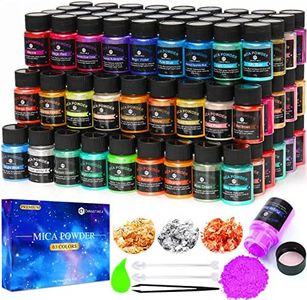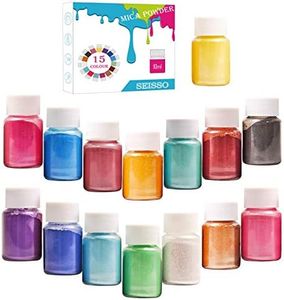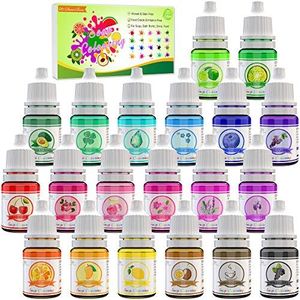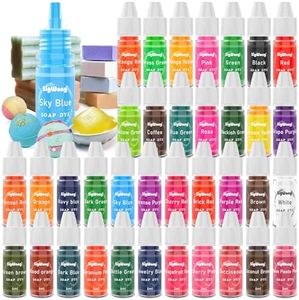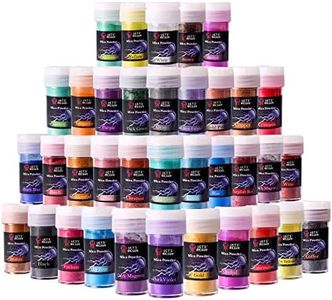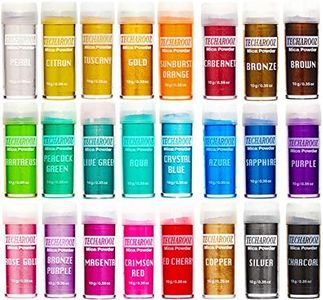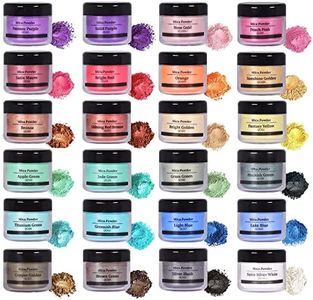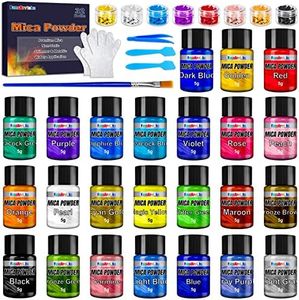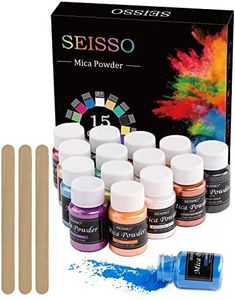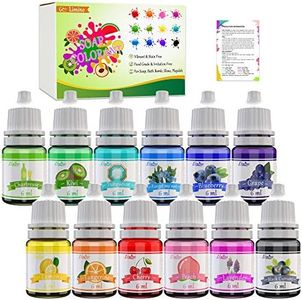We Use CookiesWe use cookies to enhance the security, performance,
functionality and for analytical and promotional activities. By continuing to browse this site you
are agreeing to our privacy policy
10 Best Soap Making Dyes
From leading brands and best sellers available on the web.Buying Guide for the Best Soap Making Dyes
Choosing the right soap-making dye can greatly impact the look and appeal of your finished soap. Dyes are used to add vibrant or subtle colors to your soap creations, making them unique and attractive. The process involves considering what effect you want in your soap—whether bold colors, natural tones, or something in between. It’s important to think about how the color will interact with other ingredients and what safety measures are necessary for skin contact. Understanding some key properties will help you narrow down the best dye for your soap-making needs.Type of DyeThe main types of colorants for soap-making are liquid dyes, powder pigments, micas, and natural colorants. Each type produces different effects: liquid dyes are easy to blend and tend to provide vibrant colors, powder pigments are often stronger but require extra mixing, micas offer shimmery or metallic effects, and natural colorants (like clays or herbal powders) give more muted or earthy tones. It’s important because each type works better in different soap bases (like melt-and-pour versus cold process) and will affect the final appearance of your soap. To choose, think about the technique you’re using and the final look you want—glitter, bold, subdued, or natural.
Color StabilityColor stability refers to how well a dye holds its color over time and through the soap-making process. Some dyes can fade or change when exposed to high pH levels, sunlight, or heat. This matters because you want the soap to look as intended not only right after making it, but after it cures and is used. Some colors, like blues and purples, can sometimes morph or fade in certain soap bases. If you want long-lasting and true colors, look for dyes known for stability in your chosen soap process, and always test a small batch first.
Skin SafetySkin safety is crucial because soap is used on the body, so the dye must be skin-safe and approved for cosmetic use. Some dyes are safe for crafts but not for skin; others are specifically formulated for body products. This is important to prevent skin irritation or allergic reactions. Always read labels for 'soap safe' or 'cosmetic grade.' When picking, consider who will use the soap—if it’s for sensitive skin or children, opt for natural or hypoallergenic colorants.
SolubilitySolubility means how well the dye dissolves in your soap base. Some dyes work best in water-based soap, others blend into oil-based bases, and some (like powders) may need pre-mixing to avoid clumps or streaks. This matters for a smooth and even color throughout your soap without spots or separation. Check whether your chosen dye is water- or oil-soluble, and choose accordingly based on the type of soap you’re making. Match the dye’s solubility to your process for best results.
Color IntensityColor intensity refers to how deep or strong the color will appear in your soap, depending on the dye concentration. Some dyes give bold colors with just a little, while others need more to achieve the same effect. This is important so you can reach your desired brightness without using more dye than is safe. Decide if you want light pastels, medium hues, or bold, vivid colors, and pick dyes that match your vision. Always start with less and add more as needed to avoid over-coloring.

